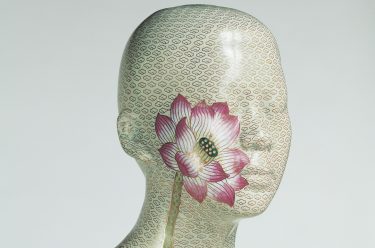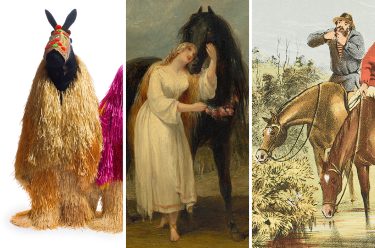Textiles have defined nationalities, facilitated cultural exchanges, and played a role in the rise and fall of empires, drawn from the QAGOMA Collection, the exhibition ‘I Can Spin Skies’ at the Queensland Art Gallery’s Henry and Amanda Bartlett Galleries (5 & 6) focuses on a breadth of textile practices — and art influenced by textile production — from across the broader geography and history of Asia.
In the thirteenth century, Sufi poet Rumi (1207–73)1 wrote a series of poems about the humble silkworm, eulogising the creature’s ability to ‘spin skies’; to create the thread that was one of the most prized commodities of the ancient world. While Rumi alludes to metamorphosis achieved through spiritual enlightenment, his poetry also hints at the importance of textiles to transnational exchange during his lifetime and beyond.
Cloth, whether woven from silk, cotton or other fibres, has been the second most traded object in world history, outclassed only by grain. The commercial exchange of textiles for ritual, decoration, status or everyday use has defined nationalities, facilitated cultural exchanges, and played a role in the rise and fall of empires. In more recent times, many contemporary artists have used cloth in their practice to allude to these larger stories and subtexts. Bringing together a diverse range of practices and mediums, ‘I can spin skies’ features works dating from the second or third century CE to the 2020s, and covering a vast
geography from West, Central, East, South and South-East Asia.
Puttapaka Weaver ‘Telia rumal with clocks and planes’ c.1990s

Whether artists incorporate cloth or refer to it obliquely, textiles and fabric are a key consideration or motif that connect across the works in the exhibition. For example, a unique and fascinating collection of nineteenth- and twentieth-century telia rumal double-ikat cloths from south-eastern India (illustrated) speak of little known cultural and trade ties, combining Arab or Islamic motifs with modern symbols like aeroplanes or gramophones. Kawayan de Guia’s Revisiting his ego’s grave 2018 (illustrated) places an Indigenous Cordilleran textile (used in rites of passage) beneath a bul-ul (ancestor figure) who is shown being operated on by Western surgeons, an implicit criticism of the way Indigenous values have been misinterpreted and manipulated in a society that values capital over humanity.
Kawayan De Guia ‘Revisiting his Ego’s grave’ 2018

Almagul Menlibayeva’s Wrapping history 2010 (illustrated), from her ‘My silk road to you’ series, acknowledges Kazakhstan’s Islamic heritage and rich cultural histories, as well drawing on Eurasian nomadic cosmologies and pre‑Silk Road textile histories. Outlined against the facade of a decorative mosque, a single female figure is shown shrouded in the voluminous whorls of a vast ikat cloth. Zahra Imani’s appliqué wall-hangings are rendered in fabrics found in home environments in Iran. She intentionally ties her work to a history of domestic handicraft — frequently undertaken by women — incorporating references to Persian and European painting through her figurative and humorous scenes.
Almagul Menlibayeva ‘Wrapping history’ 2010
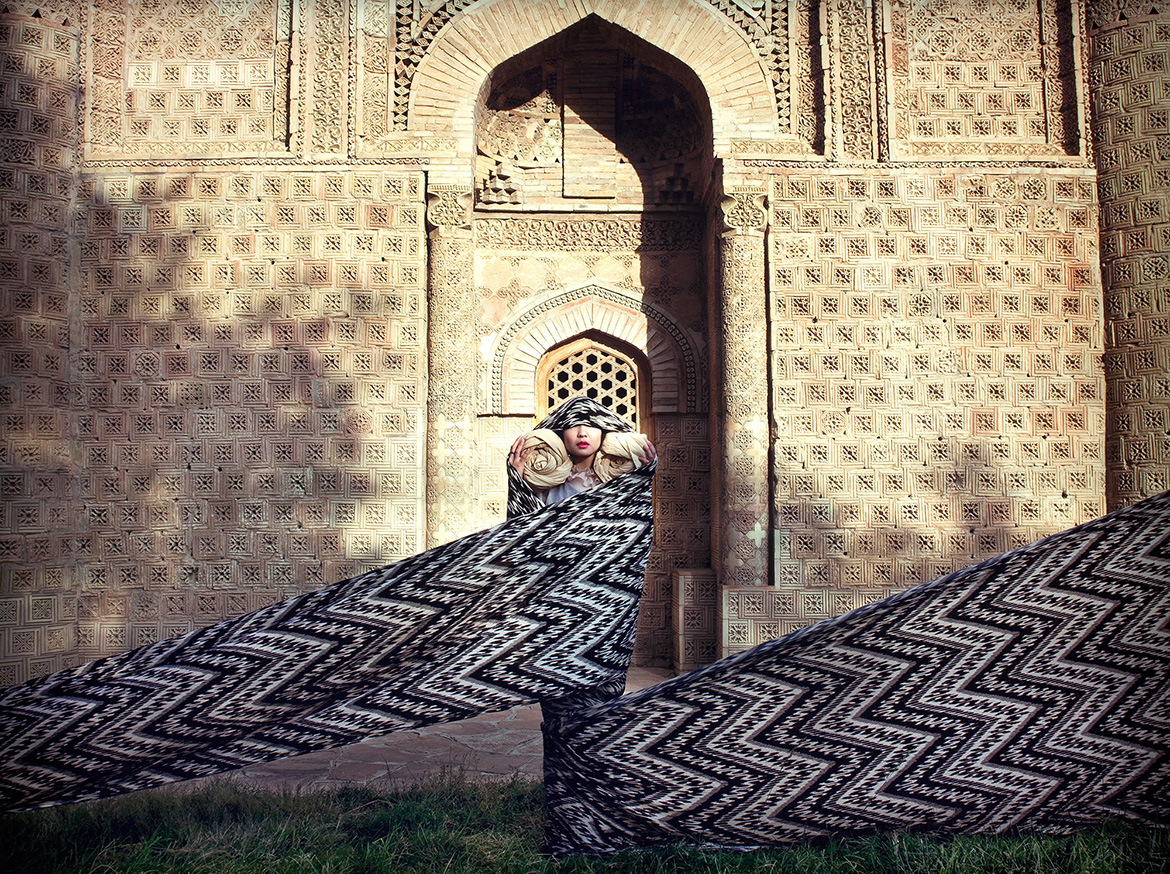
The high status associated with silk in China is subverted in Wang Jin’s Robe 1999. Based on a Peking Opera robe once made in silk and delicately embroidered with waves, clouds and dragons, the artist has re-created it in plastic and nylon fishing thread, giving the robe a ghostly, synthetic presence. Silk also played a central role in Japanese society, Japan being the largest exporter after China. In the exhibition, a group of prints, scrolls, photographs and textiles revolve around the economic and social importance of silk. In both China and Japan, silk was used as a base for painting and for important documents (the first paper was made with silk pulp and other fibres). During the Meiji era, it was one of the initial products to be industrialised at scale, and facilitated Japan’s move towards becoming to an industrialised, capitalist nation.
Finally, ‘I can spin skies’ highlights the broader legacies of the silk trade, which enabled the dissemination of religions such as Islam and Buddhism. It features Buddhist sculpture from Japan, Thailand and Gandhara, with ceramics from South-East Asia, and works on paper from the Islamic world — items often created or exchanged during the foundational eras of global trade and exchange in which textiles were worth their weight in gold.
Abigail Bernal is Associate Curator, Asian Art, QAGOMA
Endnote
1 Jalal al-Din Rumi was an Islamic Sufi poet who authored some 60 000 lines of poetry, lectures, sermons, and letters in Persian and Arabic, and who founded the Mevlevi (Mawlawiyya) dervish order.
Miyagawa Chōshun ‘Hanging scroll: Courtesan and maid’ 18th century
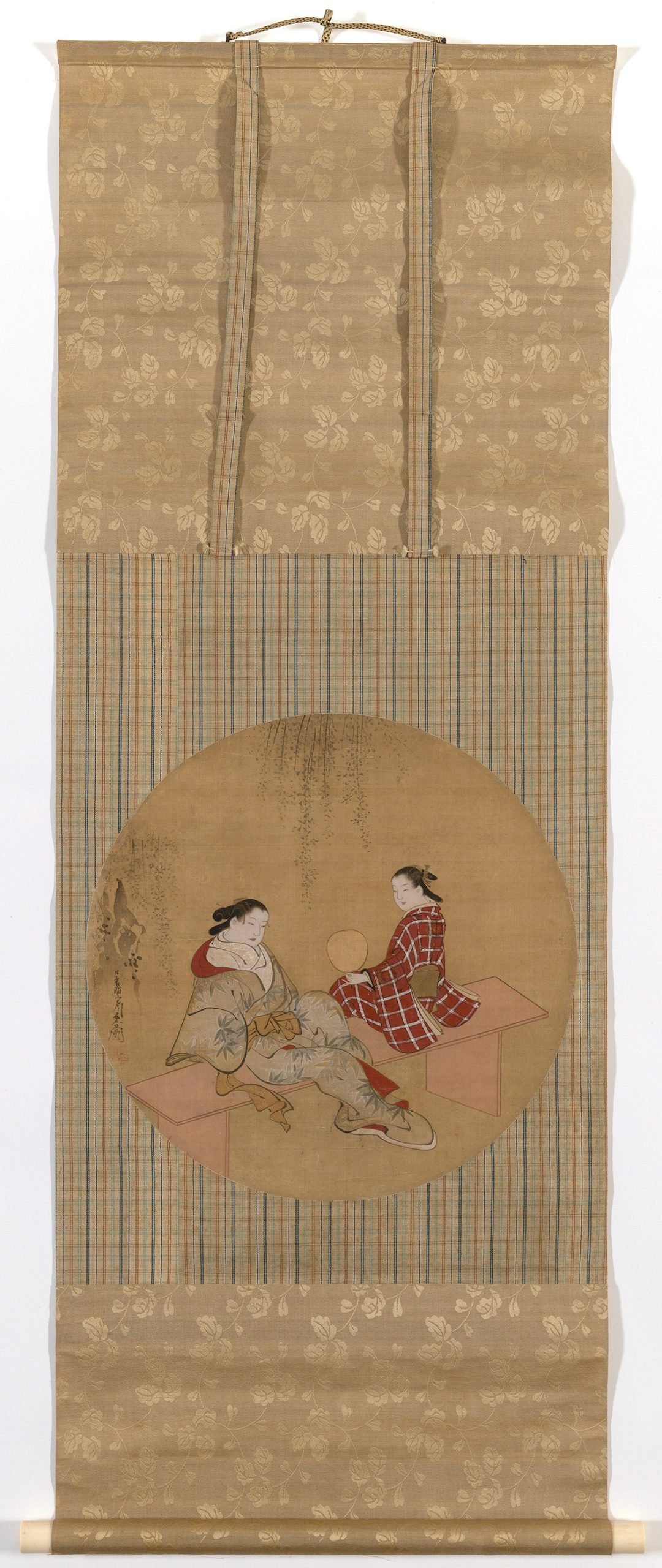
Ah Xian ‘Human human – lotus, cloisonné figure 1’ 2000-01
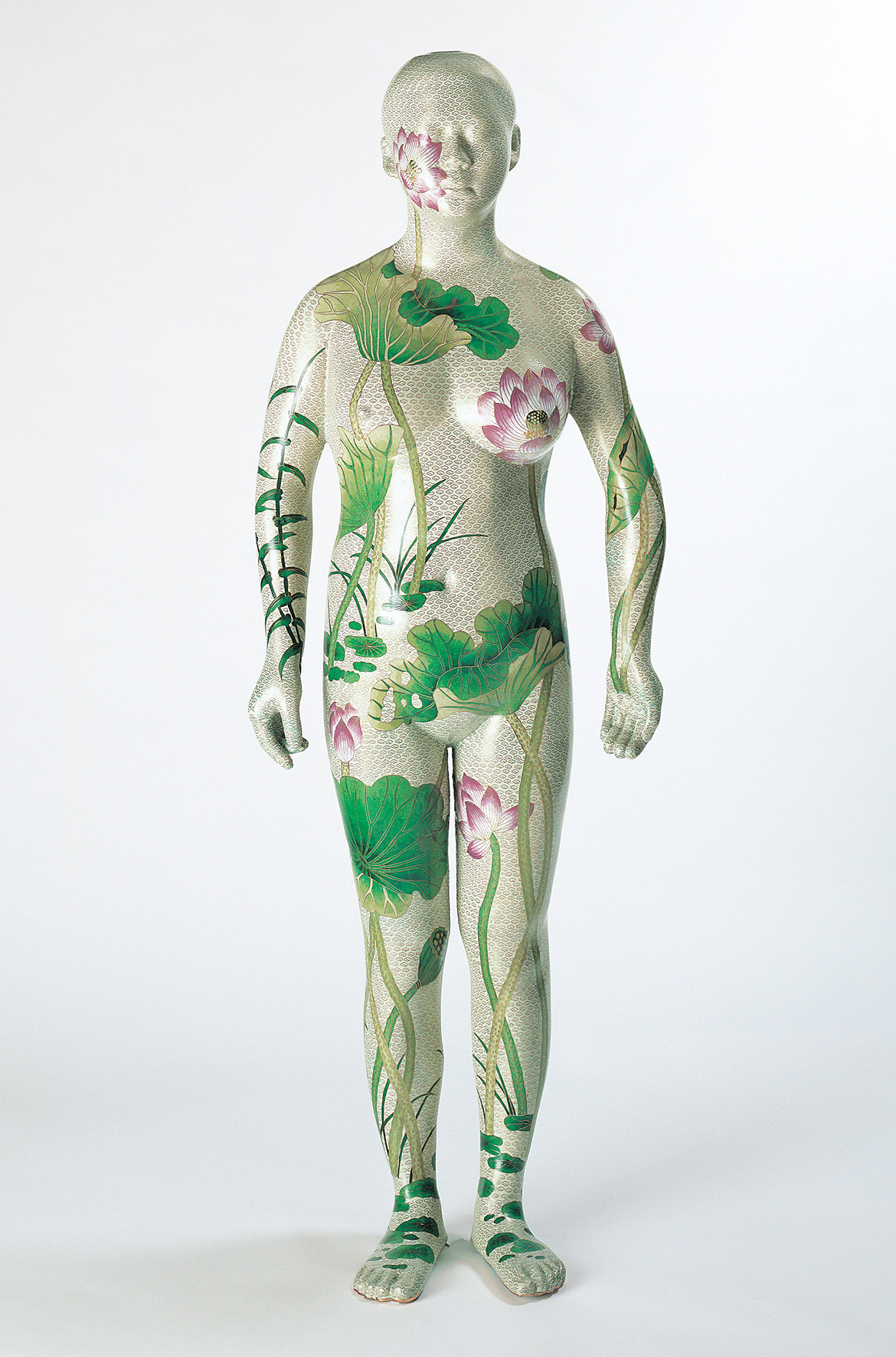
Idas Losin ‘Waiting to sail’ 2016

Soe Yu Nwe ‘Naga Maedaw serpent‘ 2018

#QAGOMA

